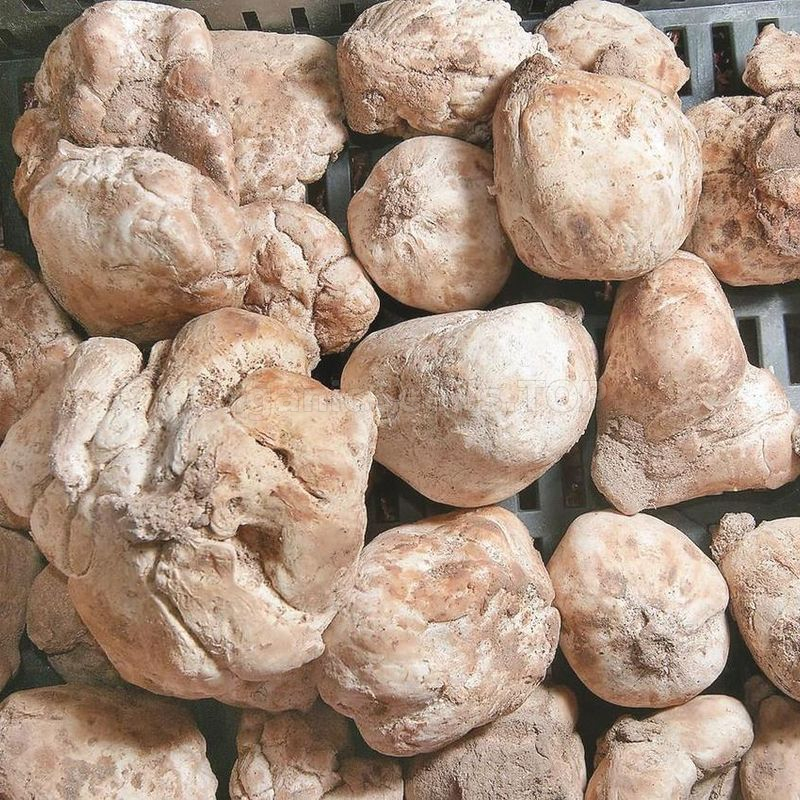The Comprehensive Guide to Fresh Truffles: Market Insights, Culinary U…
페이지 정보
작성자 FU 작성일25-11-15 00:29 (수정:25-11-15 00:29)관련링크
본문

Introduction to Truffles: Nature’s Culinary Gems
Truffles, the rare subterranean fungi prized for their intense aroma and flavor, are categorized into varieties such as Tuber magnatum (white Alba truffle), Tuber melanosporum (black Périgord truffle), and Tuber aestivum (summer truffle). These gourmet delicacies thrive in specific regions, including Italy, France, and parts of the Balkans, with prices ranging from $800/kg for summer truffles to over $4,500/kg for premium white truffles. Their scarcity and labor-intensive harvesting methods, often involving trained dogs, contribute to their high market value.
Truffle Market Dynamics: Pricing, Wholesale, and Sales
The global truffle market thrives on wholesale transactions, with distributors offering fresh, frozen, or preserved products. Tuber magnatum pico, the white vs black Truffles key differences truffle, commands the highest prices due to its short season (October–December) and delicate aroma. Black truffles (Tuber melanosporum) are slightly more affordable, averaging $1,200–$2,500/kg. Lesser-known varieties like Tuber brumale or Tuber borchii are budget-friendly alternatives. Wholesalers often grade truffles by size, aroma, and texture, with "extra grade" reserved for flawless specimens. Farmers and foragers sell directly to luxury restaurants, specialty stores, or online platforms like TruffleHunter or Urbani Tartufi.

Culinary Applications: From Fresh Shavings to Processed Delicacies
Fresh truffles are shaved over pasta, risotto, or eggs to elevate dishes, while minced or sliced truffles infuse oils, butters, and sauces like tartufata (a blend of truffle, mushrooms, and olive oil). Frozen truffles retain much of their flavor, making them a practical choice for off-season cooking. Dehydrated truffles or truffle salts offer longer shelf life but milder aroma. Burgundy truffles (Tuber uncinatum), harvested in autumn, are favored for their nutty profile, while summer truffles provide a subtle earthy note. Chefs also experiment with truffle carpaccio or truffle-infused honey for innovative dishes.
Truffle Oil and Dog Training: Methods and Safety
Truffle hunting relies on specially trained dogs, as their keen sense of smell locates ripe truffles underground. Training kits, including truffle-scented oils or dehydrated truffle fragments, help acclimate dogs to the target aroma. While truffle oil (often synthetic) is safe for dogs in minimal doses, experts caution against overuse due to its high fat content. Fresh truffles pose no toxicity risks, but moderation is key. Professional trainers emphasize positive reinforcement, with "truffle dog academies" emerging in Europe and North America to meet growing demand.
Preservation and Storage: Maximizing Shelf Life
Fresh truffles are highly perishable, lasting 7–10 days when stored in airtight containers with rice or paper towels. Freezing preserves them for months, though texture may soften. Dehydrated or vacuum-sealed truffles extend usability to a year. Truffle oils and butters, while convenient, often contain preservatives and should be refrigerated after opening. For chefs, frozen black truffle slices or pureed truffle pastes offer year-round accessibility without sacrificing quality.
Conclusion: The Future of Truffles
As global demand grows, sustainable cultivation practices and ethical foraging are critical to preserving truffle ecosystems. Innovations like inoculated oak saplings and controlled truffle farms aim to stabilize supply, while niche markets for truffle-infused pet products or artisanal sauces expand consumer access. Whether shaved over a Michelin-starred dish or used to train a eager truffle-hunting pup, these aromatic fungi continue to captivate gourmands and entrepreneurs alike.
댓글목록
등록된 댓글이 없습니다.

